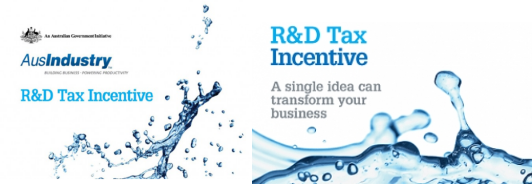The Advantages of Doing Business in Australia: The R&D Tax Incentive Program and How it Could Benefit You
Introduction:
The Australian Federal Government’s R&D Tax Incentive Program, arguably one of the most generous tax incentives globally, is surprisingly easily available to both Australian technology companies and similar Overseas establishments that have a presence in Australia.
The Incentive offers generous tax offsets to companies undertaking R&D activities in Australia. In addition, pre-approved Overseas R&D activities (and associated expenditure) are also eligible.
First, let’s understand the Program and how it operates. Then, we’ll explore how the Program can be of significant benefit to Overseas companies that undertake some or all of their R&D in Australia. Finally, we’ll examine the requirements for setting up a ‘permanent establishment’ in Australia – where a Double Tax Agreement with Australia is necessary for Overseas to access the Incentive (there are approximately 45 such DTAs in place).
The information presented below is meant to provide a high-level overview of the salient points of the Program. For more detailed information, the author advises further reading at:
https://www.business.gov.au/Grants-and-Programs/Research-and-Development-Tax-Incentive
AND
https://www.ato.gov.au/Business/Research-and-development-tax-incentive/
Administration:
The Program is jointly administered by AusIndustry (a division within the Department of Industry, Science, Energy and Resources) and the Australian Taxation Office (ATO).
AusIndustry is tasked with assessing the ‘technical/scientific’ eligibility of the R&D activities; while the ATO manages the eligibility of the R&D expenditure that is being claimed by a company (through that company’s tax return).
Each organisation has fairly stringent compliance requirements in assessing the eligibility of R&D activities and expenditure. This is essential for maintaining the integrity of the Program, as it offers generous tax benefits for a wide range of R&D activity types and a fairly wide scope of R&D expenditure.
Eligibility:
Company:
In order for a company to claim the R&D Tax Incentive, that company must be a body corporate registered in Australia, or be a permanent establishment of an Overseas company registered in Australia (where Double Tax Agreements are in place between the two countries).
Activities:
Eligible R&D activities are broadly defined as those activities that a company will undertake outside their normal scope of business activities.
These activities are undertaken for the purpose of generating new knowledge (typically in the form of new of improved materials, products, devices, processes, or services).
At the time these (core or experimental) activities are undertaken, their outcome could not be known or determined in advance based on current knowledge, information, or experience. The outcome of such activities can only be determined by applying the scientific principles of systematic experimental methodology to acquire new knowledge.
In addition to these core/experimental activities, other ‘associated’ activities are necessarily undertaken to support the experimental activities. These supporting activities must be directly related to the core/experimental activities, or undertaken for the dominant purpose of supporting those.
The R&D activities must be conducted within Australia, unless an Overseas Finding has been made and approved.
In respect of compliance, AusIndustry has the expectation that companies maintain contemporaneous records that can substantiate the undertaking of such R&D activities. These may be in the form of project briefs, test reports, publications, lab books, correspondence of a technical nature, photographs, scientific/technical board meeting minutes. Such evidence may be called upon during compliance reviews or audits.
Expenditure:
There are number of categories of R&D expenditure that may be deemed eligible. These must be necessarily segregated from the ‘business-as-usual’ (or commercial) expenditure incurred on ‘non-R&D’ activities, as these expenditures are subject to the higher tax offset percentages (see later).
The broad categories of eligible R&D expenditure include:
- Salaries / Wages:
This is tracked as staff time spent on eligible R&D activities (as opposed to ‘business-as-usual’ activities).
- Contractors or Consultants:
These may be Universities, Research Organisations, Clinical Research Organisations (CROs), Pathology Laboratories, Clinical Manufacturing Organisations (CMOs), specialist external Scientific or Technical Consultants, Testing Facilities, and the like.
- Materials:
Oftentimes, raw materials are required for the R&D activities, and these may include biological materials, chemicals, prototype components.
- Eligible Overhead Expenditure:
These are the items of expenditure that a company incurs in enabling the operation of the business while undertaking R&D activities. These costs usually have to have the dominant purpose of supporting (or being crucial to) the R&D activities. Examples are utilities, rent, repairs & maintenance, security, R&D travel, staff technical training, specific state and federal taxes.
- Depreciation:
The decline in value for equipment or assets that are used for the R&D activities may be claimed at the higher R&D tax offset rate – to the extent that those assets are used in the R&D activities.
As with AusIndustry, the ATO expects that claimant companies maintain adequate contemporaneous evidence of R&D expenditure, and how these are associated with the relevant R&D activities. These may be in the form of staff time-tracking, contracts, invoices, and appropriate apportionment methodologies (usually for eligible overheads), and may be called upon during compliance reviews or audits.
More to follow in next edition.




文章评论(0)